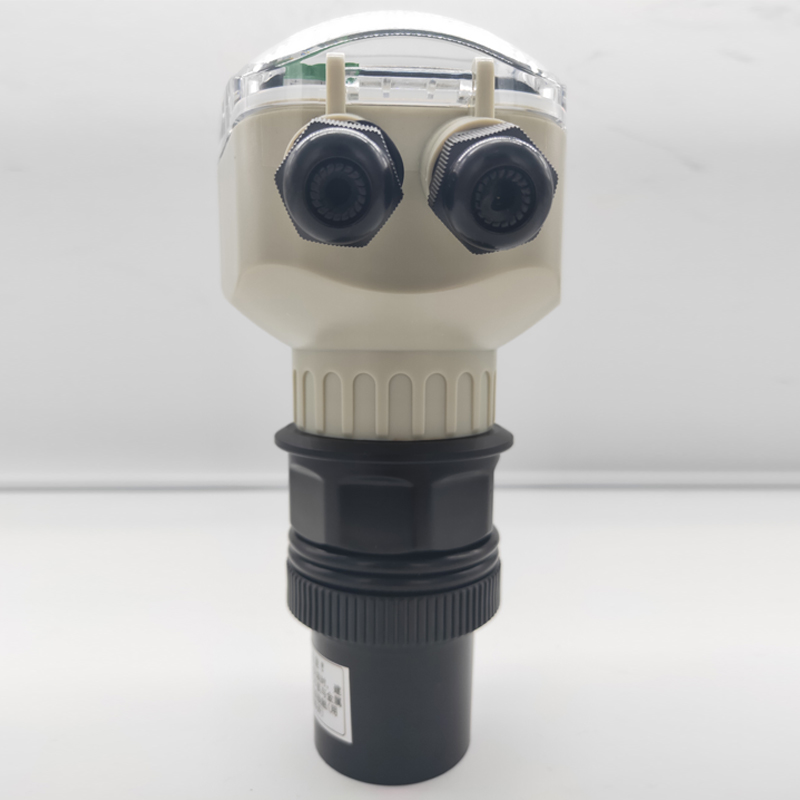Ultrasonic level gauge is realized based on the transmission and reception of ultrasonic waves. The transmission speed of ultrasonic waves in the air is constant. The ultrasonic waves are transmitted out, and then the waves reflected from the liquid or object surface are received. The timing starts from the transmission to the reception. After the echo is over, the time for the ultrasonic wave to propagate in the air is fixed. Because it is a round trip, the actual distance is half of the distance. The depth of the tank or the height of the tank is fixed. The actual liquid level is the depth of the tank minus the distance measured by the ultrasonic level gauge, which is the liquid level or the level. Height. As a result, the ultrasonic measurement of liquid level or material level is realized.As the use of ultrasonic level gauges in modern industry becomes more and more common, there are more and more occasions for ultrasonic level gauges. However, there are two situations where ultrasonic level sensors are not suitable for use, including:1. In the case of stirring, the ultrasonic level gauge will produce false signal echoes when measuring the liquid level, because the liquid level will constantly change during the stirring process, which will cause the data read by the probe to differ greatly, resulting in measurement results Does not meet customer requirements.2. Ultrasonic level gauges are used to measure higher concentrations of acidic liquids and alkaline liquids, which will cause the problem that the ultrasonic level gauge cannot read the echo signal. In fact, there is no problem with the ultrasonic level, but the higher concentration. Acidic liquids and alkaline liquids will produce dense gas mist that absorbs the ultrasonic waves, so the echo cannot be read on site, causing the ultrasonic level gauge to fail to detect.The echo intensity of ultrasonic waves is mainly affected by the following two factors. They are: the more stable the propagation medium, the more conducive to propagation and the flatter the surface of the measured medium, the larger (harder) the acoustic impedance, the more conducive to reflecting the echo, among them:1. The more stable the propagation medium, the more conducive to propagation: Ultrasonic waves are mechanical waves. During the propagation of mechanical waves, it will be affected by the stability of the propagation medium. For example, there is a pond with water. When the wind and waves are calm, you can see the ripples by throwing a stone into the pond. When the strong wind makes the pond water wavy, it is difficult to see the ripples by throwing large stones into the pond. There are many factors that cause air fluctuations, such as: dust, air waves, steam, material flow, etc., will cause air fluctuations, reduce the quality of the echo, and affect the measurement effect. When dust, air waves and other phenomena are serious, it is recommended to use a low-frequency ultrasonic level meter to measure.2. The flatter the surface of the measured medium, the larger (harder) the acoustic impedance, the more conducive to the reflection of the echo.When measuring solids, the surface to be measured is uneven and has a certain angle of repose. The reflected wave under this condition is diffuse reflected wave. Since reflection is related to wavelength, reflection can only occur when the linearity of the reflecting surface is comparable to or greater than the wavelength. Obviously, the higher the operating frequency, the smaller the wavelength, and for smaller materials, diffuse reflection is more likely to occur. For example, the wavelength of a mechanical wave with a frequency of 10KHz in the air is 34mm. In most cases, the linearity of the material will not be so large. In addition, when working at low frequencies, if the opening angle of the transmitted wave is large, the echo will be very wide. At this time, the measured data is also inaccurate, sometimes a few hundred millimeters or even 1 meter or more. Therefore, to measure the solid material level with small particles, it is recommended to use a high-frequency ultrasonic level meter.
Post time: 21-09-21
